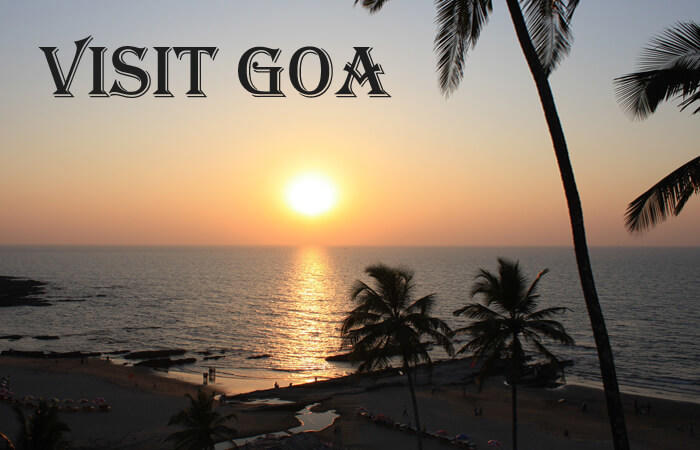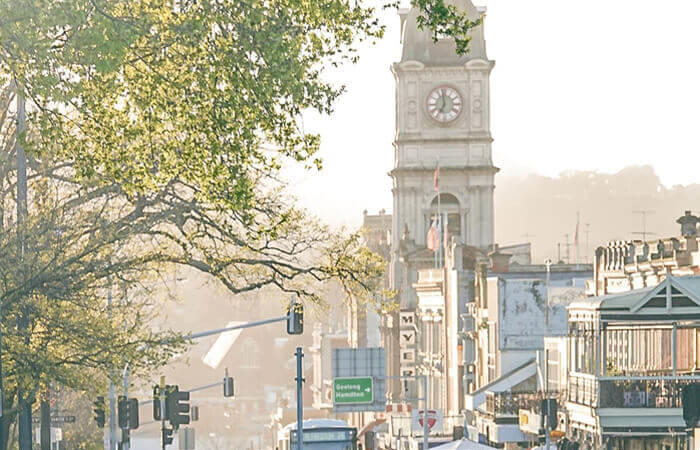Gangotri Dham – The Origin Of River Ganges
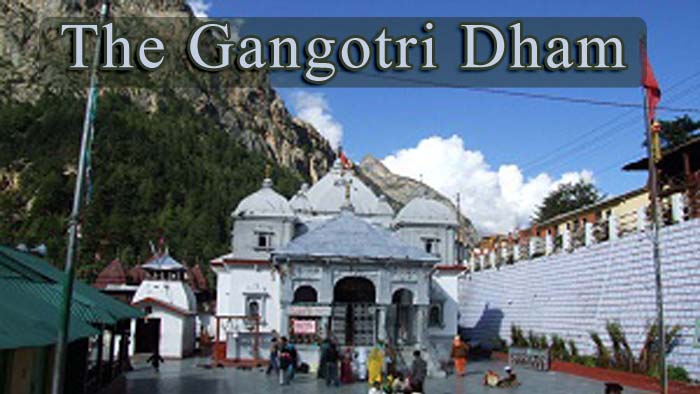
Gangotri Dham is the point of origin of river Ganga and is one of the four sites of Char Dham pilgrimage. The Ganges River is the longest and most sacred river in the world. Gangotri is a Hindu pilgrimage site at an altitude of 3049 m on the banks of the river Bhagirathi and at the origin of the Ganges River in Uttarkashi district in the state of Uttarakhand, India.
Bhagirathi River originates from Gaumukh, which is located at the base of Gangotri and Khatilang glaciers in Uttarakhand. The terminus of the Gangotri Glacier is said to resemble a cow’s mouth, and the place is called Gomukh or Gaumukh. Pilgrims do not end their journey at Gangotri and prefer to go further to the glacier where the river begins. Hindus consider bathing in the icy water near the Gangotri a holy ritual.
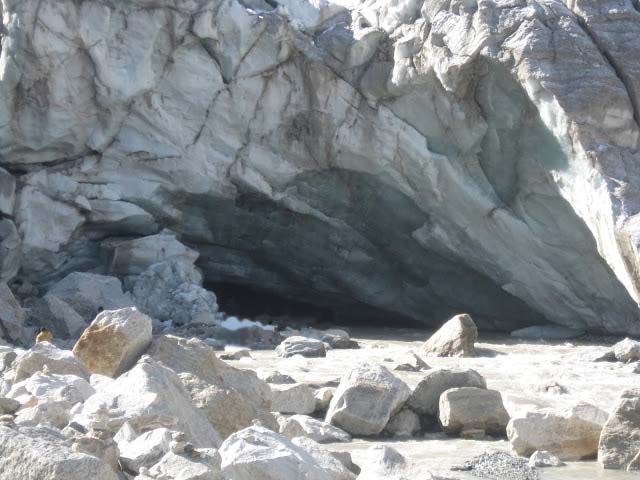
History of Gangotri Temple
According to Hindu mythology, it is said that the river Ganga is the result of the reward given by Lord Shiva to King “Bhagiratha”.
King Sagar after slaying the demons in earth staged an Ashwamedh Yagna to proclaim his supremacy. Lord Indra, the supreme ruler of the Gods, felt threatened by his success, and stole the horse and tied it in Kapil Muni Ashram. Sagar sons stormed the ashram in search of the horse. The sage cursed them and reduced all his sons to ashes.
The king asked the seer for forgiveness and was told that the cursed can be reversed only if the holy Ganga is brought down from heaven to earth to clean the ashes by her waters. It was Bhagirath, the grandson of Sagar who succeeded in his perseverance to bring down the Ganga to earth.
But the power of Ganga threatened to inundate the world. If the Ganges comes to Earth, the Earth will be destroyed, so Bhagirath prayed to Lord Shiva who agreed to unfasten his matted locks, trap the river within them and release only a few drops of her waters for the benefit of mankind. The river thus flowed on earth to absolve the sins of Sagar from the curse.

Gangotri Temple was built by General Amar Singh Thapa of Gorkha forces in the early 18 century and renovated by Maharaja Madho Singh of Jaipur. It is an exquisite 6m high structure made of white stone dedicated to Goddess Ganga. Images of Goddesses Lakshmi, Saraswati, Yamuna, Annapurna, and Mahadurga are also enshrined in the temple.
The temple dedicated to Goddess Ganga is located near a sacred stone where King Bhagirath worshipped Lord Shiva. Bhagirath Shila is a scared slab where king Bhagirath meditated. Ganga is believed to have touched earth at this spot. According to another legend, Pandavas performed the great ‘Deva Yagna‘ here to atone the deaths of their kinsmen in the epic battle of Mahabharata. Hindus believe that performing the ancestral rites on the banks of Bhagirathi frees the spirit of the ancestor from the cycle of rebirth and a holy dip in its waters cleanses sins committed in the present also past births.
The source of the river is called Bhagirathi and is named Ganga from Devprayag, where it meets Alaknanda. The point of origin of the river Bhagirathi is situated in the glacier Gaumukh, and it is 19 km away from Gangotri.
The Gangotri temple opens on the auspicious day of Akshaya Tritiya which falls in the month of May and closes on Yama Dwitiya or Bhai Dooj which falls in the month of November. The Gangotri temple remains closed for the rest of six months. The Goddess shifts to the village Mukhba during the winter months. In the month of May, Ganga Dussehra is celebrated with great fanfare as the day of the birth of Ganga.
Attractive places around Gangotri Temple
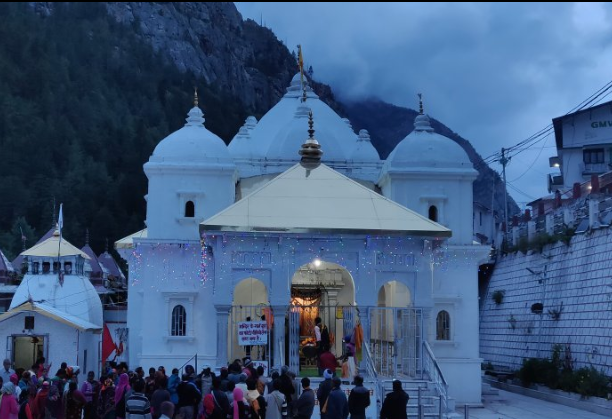
Gaumukh – 18km from Gangotri is Gaumukh which is the physical source of holy river Ganga. It is a scenically stunning trek amidst the dense forest and towering peaks.
Pandava Cave – Located 1.5 km from Gangotri, where the Pandavas have meditated and rested at Kailash.
Bhagirath Shila – Bhagirath Shila is considered to be the sacred rock where King Bhagiratha prayed to Lord Shiva.
Yamunotri – In a pilgrimage to Chhota Char Dham, Gangotri often goes after Yamunotri.
Uttarkashi – The time from Uttarkashi to Gangotri Temple is about 4 hours by road.
How to Reach Gangotri
By Road: It is easily accessible by road with most major cities of Gangotri, Uttarakhand, Uttar Pradesh, Delhi, and NCR region. It is located 452 kilometers from Delhi and 229 kilometers from Rishikesh. The road from Rishikesh to Gangotri branches off at Dharasu to reach the town of Uttarkashi and goes to Gangotri via Maneri, Bhatwari, Gangnani, Harsil, Dharali, and Bhaironghati. The journey from Yamunotri to Gangotri entails a journey back to Barkot and then to Dharasu. Busses, private taxis, and shared jeep are available from Rishikesh to Gangotri.
Railway Travel: The nearest railway is at Rishikesh, 250 km from Gangotri. From these places, one can either take a bus or taxi to reach the pilgrimage site.
Air Travel: The nearest airport to Gangotri is Dehradun, which is 226 km away.


